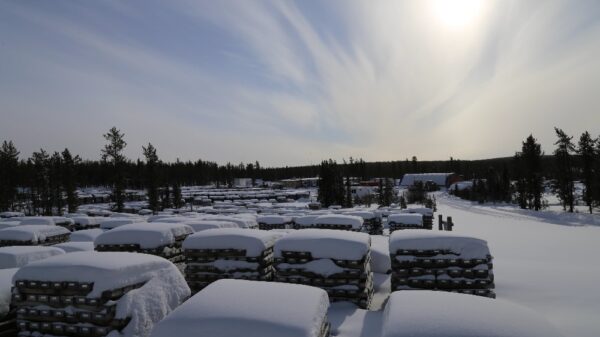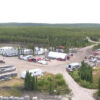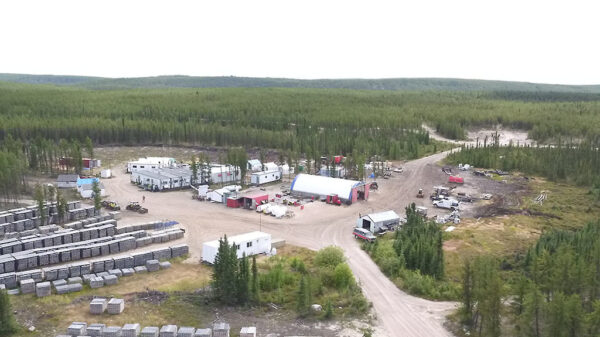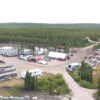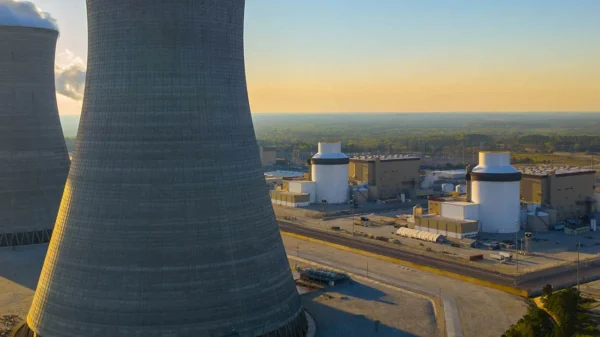Denison Mines Corp. (TSX: DML) (NYSE: DNN) finished its inaugural In-Situ Recovery (ISR) field test program its Midwest Uranium Project in the Athabasca Basin.
Announced on Monday, the program involved drilling 10 small-diameter boreholes within the Midwest Main deposit to evaluate site-specific conditions for ISR mining.
The company successfully performed a series of tests on each borehole, creating an extensive database of geological, hydrogeological, geotechnical, and metallurgical data. This validated key assumptions in Denison’s previously completed internal conceptual mining study, which evaluated the potential use of ISR mining at Midwest.
Denison, in collaboration with Orano Canada Inc., carried out the program. Further, Orano Canada operates and owns 74.83 per cent of the venture. Orano Canada is part of the Orano Group, a leading international operator in the field of nuclear materials, with activities including uranium mining, conversion, enrichment, and other fuel services.
Midwest is located approximately 25 kilometres from the Denison-Orano Canada-owned McClean Lake Operation. Additionally, the operation is accessible by existing roads. It’s also currently processing ore for the Cigar Lake mine under a toll milling agreement and has excess licensed processing capacity.
“Orano has significant global expertise in ISR mining and Denison brings industry leadership in the advancement of ISR mining in the Athabasca Basin region – allowing the joint venture to assemble a very strong team to carry out and oversee this inaugural test program,” said David Cates, Denison’s president and CEO.
According to Cates, the program successfully met its planned objectives, and the results confirm that the Midwest Main deposit has the necessary characteristics for an ISR operation. Consequently, further evaluation is justified.
Read more: ATHA Energy Corp. starts the first phase of uranium drilling in Nunavut
Read more: ATHA gives Riverboat Energy option to take majority interest in Vista uranium project
Tests confirm hydraulic conductivity
The program confirmed hydraulic conductivity through pump and injection tests, which validated hydraulic connectivity in the test wells within the mineralized zone. Furthermore, these tests have achieved hydraulic conductivity values consistent with the concept study, indicating sufficient permeability, which is necessary to deploy the ISR mining method.
Additionally, Denison successfully deployed a method of permeability enhancement within two wells, demonstrating its suitability for the Midwest Main deposit. Furthermore, the company verified the efficiency of this method by comparing pre- and post-permeability enhancement hydraulic testing. During the program, the company also defined and collected core samples representative of the Midwest deposit for use in future metallurgical tests to determine leaching characteristics.
The program successfully completed various pump, injection, and packer tests to assess the permeability of the Midwest Main deposit. These tests measured pressure changes within the mineralized zone, providing evidence of the deposit’s hydraulic conditions and indicating the potential for the movement of mining solution in an ISR mining operation.
The hydrogeological testing results produced hydraulic conductivity values consistent with those assumed in the concept study. The company also performed additional test work downhole on mineralized drill core recovered during the program. These included permeability and porosity tests.
A permeability enhancement method was successfully evaluated on two test wells, with efficacy verified by comparing pre- and post-permeability enhancement hydraulic conductivity tests. This method demonstrated increased and normalized hydraulic conductivity near the wellbore, improving contact with injected fluids within the mineralized zone to maximize uranium recoveries in an ISR mining environment.
Data and samples collected from the drill core recovered from the test wells facilitated assessments of matrix permeability, geotechnical evaluations, sediment analysis, and testing of compressive and tensile strength for future geotechnical assessments.
The Athabasca Basin makes Canadian nuclear competitive
The Athabasca Basin represents a significant competitive space as companies race to meet growing demand for nuclear energy.
ATHA Energy Corp (TSXV: SASK) (FRA: X5U) (OTCQB: SASKF) owns and operates the largest land package in the highest grade uranium basin in the world, and has since expanded its reach to include the Thelon Basin in Nunavut and uranium projects in Labrador.
Meanwhile, the Cameco Corporation (NYSE: CCJ) (TSX: CCO) operates the Cigar Lake Mine, one of the world’s largest high-grade uranium mines. Cameco’s operations in the Athabasca Basin have been pivotal in maintaining Canada’s position as a leading uranium producer.
ATHA Energy Corp. is a sponsor of Mugglehead news coverage







